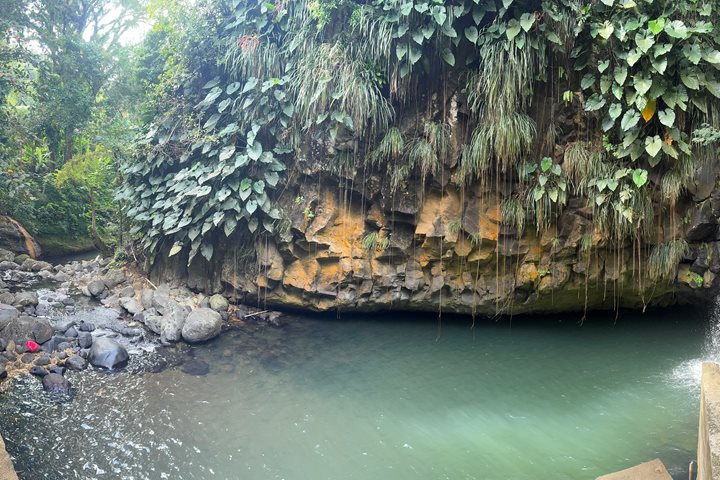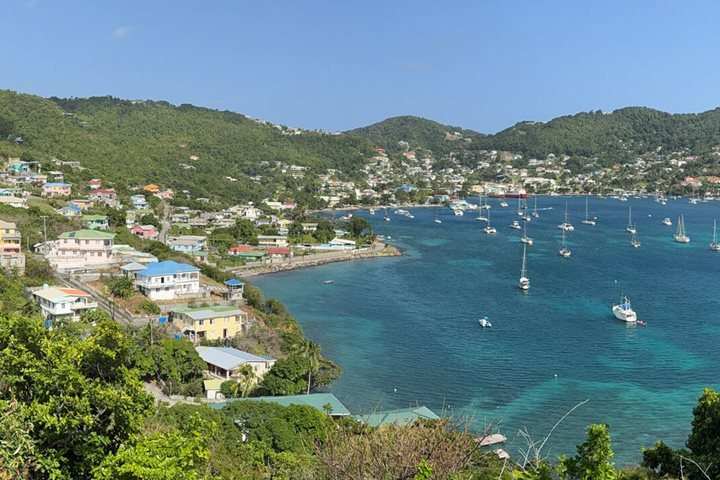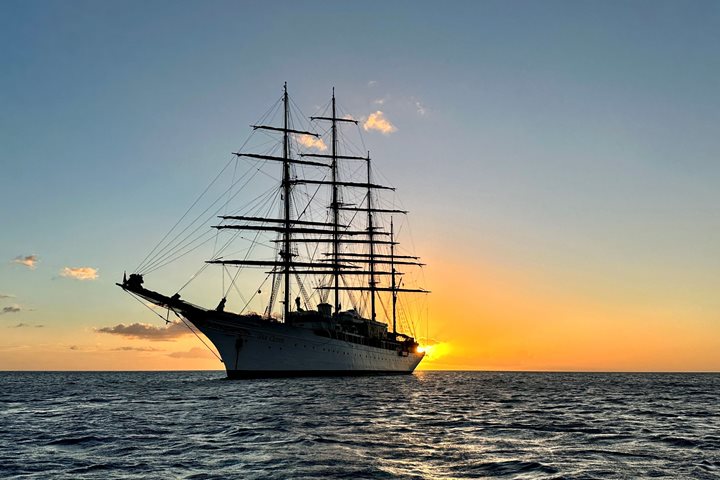An early anchorage in Dominica’s “second town” of Portsmouth provided ample time to discover why the island is referred to as the Caribbean’s Nature Island. The local culture there has developed around the bountiful fruit, vegetables, and flowers that grow along the dramatic coastlines.
Guests disembarked Sea Cloud into Cabrits National Park and prepared for a scenic drive along the island’s northeast coast. Along the way, devastation from 2017’s Hurricane Maria was apparent: coconut trees were decapitated, bridges were twisted and washed out, and roofs were still missing nearly a year and a half later. In spite of all this, the resilience of the nation’s people and ecology was strongly on display. The lush rainforest (which benefits from the island’s annual rainfall of up to 360 inches) and the small coastal communities are slowly growing and rebuilding.
Continuing along the rugged Atlantic coast, we arrived at Kalinago Barana Aute, a model village within the reservation containing the last intact community of the native Caribs who migrated to the islands more than 3,000 years ago. We were welcomed with traditional dances and drumming along with cassava bread, a staple food of the Kalinago and made from yucca, coconut, salt, and sugar.
Again, the experience emphasized the resilience and strength of the people here. The 3,500 remaining Kalinago living within the reservation are not only sharing their traditional ways of life with visitors like us but also attempting to revitalize their native language using only one remaining dictionary. After returning to Portsmouth, historian Tom Heffernan led a guided walk around restored Fort Shirley to discuss the island’s importance in military and naval history. Some guests swam and enjoyed Caribbean cocktails on one of Dominica’s best beaches, Purple Turtle Beach, before returning to Sea Cloud for al fresco drinks and dinner on the Lido Deck.







